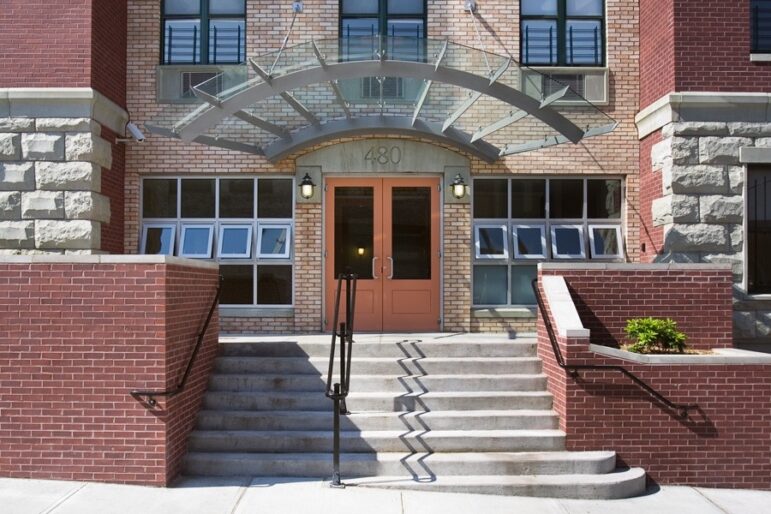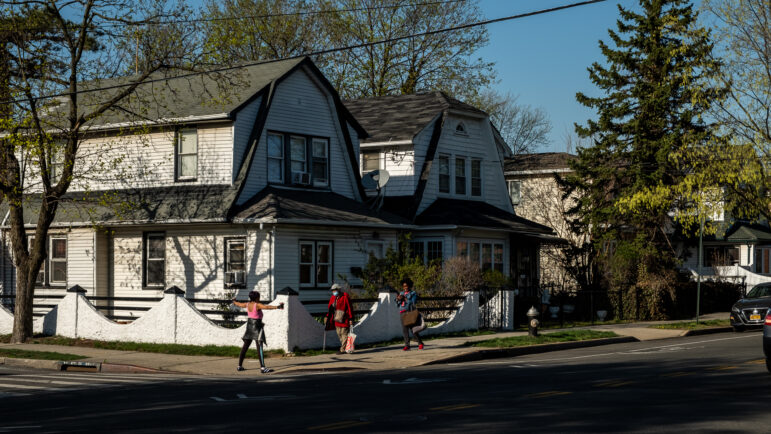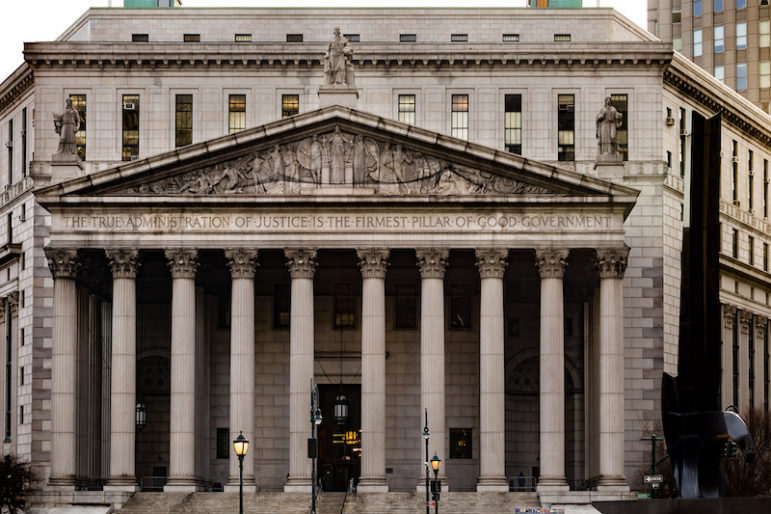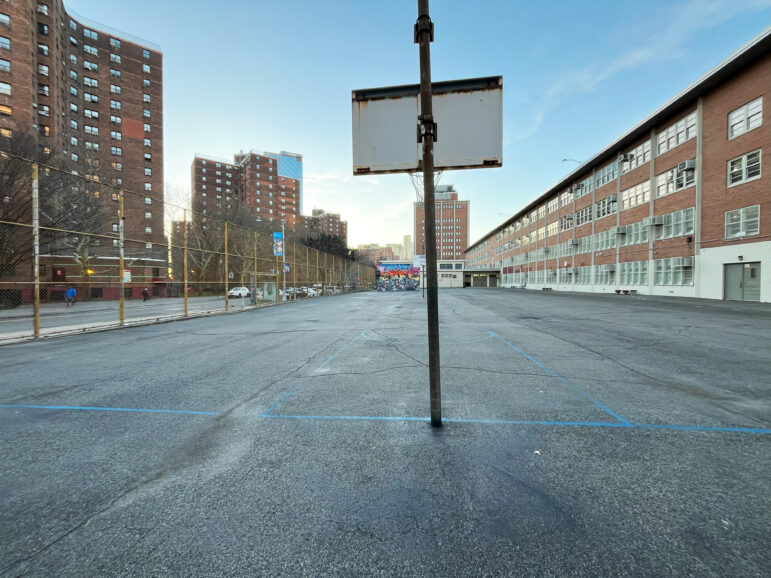Jane Jacobs liked to say, “It takes a lot of effort to do things wrong but not to do things right.” In the same vein, the late author and activist added, it takes less public investment to let the organic city repair and regenerate itself; force-feeding the process with overlarge projects requires excessive public investment.
From Red Hook to the South Bronx, from SoHo to Harlem, all over the city, efforts initiated in recent decades by community-based groups are succeeding in regenerating their neighborhoods. Many of these groups are descended from those that fought against the massive clearance projects that dramatically undermined their neighborhoods in the era of Robert Moses – the “power broker” who once held a dozen different city and state government positions at once and reshaped the New York metropolitan area in the mid-20th century.
Yet, a major revisionist effort to rehabilitate Robert Moses continues. Casting a more positive light on Moses-era projects requires turning a blind eye to the broad disruption, destabilization and displacement those projects caused. It is from that era that the city has been repairing itself since the 1970s.
Jane Jacobs, on the other hand, needs no rehabilitation. As relevant as ever, her vision for comprehending the city and understanding change is now being given equal time with a major exhibit opening this week at the Municipal Art Society, “Jane Jacobs and the Future of New York.”
Jacobs is famously known for successfully battling Moses over the West Village Urban Renewal proposal, a road through Washington Square and the Lower Manhattan Expressway. Even more significant is her lasting vision for urban change, which offered – and still offers – an alternative to Moses’ take-no-prisoners approach. When Moses was in power, his stranglehold on planning decisions meant those who shared that alternative vision hardly had a chance, whether helpless citizens or equally helpless public officials. Jacobs’ leadership mobilized those who knew a better, more humane and less destructive strategy was possible.
Her pioneering books – starting with “The Death and Life of Great American Cities” in 1961 – were always cutting-edge, but 46 years later are as fresh and relevant as ever. The public, whose vision and values she celebrated, has never stopped extolling the virtues of her precepts. Many public officials, designers, planners and developers claim to follow them, but do so in name more than in substance.
After Jacobs’ death in May 2006, and during the public discussions and commentary accompanying the Moses exhibits this winter (the centerpiece of which was on display at the Museum of the City of New York), the erroneous view was expressed that Jacobs’ “small is meaningful” philosophy is inappropriate to today. This view totally misconstrues Jacobs.
Jacobs believed in big projects: mass transit, and the boulevards and greenways that strengthen a city, not massive highways through neighborhoods that weaken it; transit-accessible big parks and neighborhood-based little parks that are gathering places, not acres of fenced-in green space with towers in the middle and signs admonishing “Keep Off the Grass”; vast school and health care systems; singular cultural venues, not clustered in centers, that spread regenerative potential around the city and help anchor neighborhoods; and economic development that works expansively by encouraging innovation and new local business formations, rather than depending on large construction projects.
Jacobs also knew how to think big. Understand the big picture, the whole city, by starting with a small component. Use the street as a starting point to understand a neighborhood, and a collection of neighborhoods as a way to understand a city.
Ironically, during the six months of Moses exhibitions and public focus on him, some people tried to give Moses all kinds of credit while saying how much they were also fans of Jane Jacobs. Amid all the exhibits, the desire for another Moses-type who “can get things done” also was expressed. To soften the blow of such an idea, commentators added that it should be a “gentler” Moses, a cross between Moses and Jane Jacobs. But this is an oxymoron – Moses and Jacobs represent polar opposites of urban thought.
The spectrum of Jacobs’ partisans is as broad as one can envision and includes both uncredentialed citizen activists and Nobel laureates. Jacobs’ thinking and writing was complex and multi-dimensional. The diversity and complexity of her ideas and interests has left her vulnerable to misinterpretation, even by some of those avowed partisans.
If there is one overarching Jacobs method, it is to observe, to find patterns, to see connections, and to draw conclusions strictly from what is, without theorizing about or projecting what could, should or would be. Jacobs helped us understand that everything about cities and their economies are part of a complex web that can’t be managed or successfully nurtured with linear plans, top-down policy doctrines or one-size-fits-all regulations. If the MAS exhibit and its associated walking tours and public panels prove successful, they will highlight and propagate this method.
~
She demonstrated that cities are living organisms. Healthy communities need busy, lively streets. Density and diversity are interdependent. Good development combines many functions made vibrant by the opportunity for serendipity and innovation that only come with flexibility. Cities are the anchor and engine of regional and national economies. The nature of economy and the economy of nature are variations of each other, she illustrated in her second-to-last book, “The Nature of Economies.”
She particularly valued the industrial neighborhoods that foster innovation, incubate new businesses needing a chance to grow, and provide jobs for a local population with more at stake in the city than suburban commuters. We are living the legacy of Moses’ lack of appreciation for this economic process. No industrial neighborhood, in Moses’ estimation, was economically of value comparable to the new big projects he planned. Thus he planned the erosion of industrial districts and their replacement by new large-scale projects bound to push out the productive local businesses and jobs. Jacobs called it “cannibalizing,” which she said New York had been doing for decades, sacrificing economically productive districts for the sake of “short-term construction jobs.”
The kind of innovation and new entrepreneurs that Jacobs celebrated is observable around the city in food, furniture, fashion, green products, lighting, restoration services and artisans serving the TV and movie industry. But these people and projects find it harder and harder to find affordable space – and to keep it for long – as speculative new development spreads around the city with each new upzoning of an industrial area.
Jacobs’ thinking and writing went way beyond urban development issues into areas that engaged scientists, world economists, ecologists and others. Especially in this era of globalization and the outsourcing abroad of so many American enterprises, Jacobs’ ideas about how to develop local economies are increasingly gaining new attention.
She also extolled the virtue of vibrant, dense neighborhoods and abhorred the trend in recent years to suburbanize urban communities instead of building back the density – not the overcrowding – that once made them thrive. Today, the most favored neighborhoods, in fact the ones with the highest real estate values, are the ones that best reflect her teaching. They are the traditional neighborhoods where new has been woven in without overwhelming the old, and where over-scaled new construction or suburbanization has not erased authentic local urban character. They exhibit her celebration of the idea that regeneration happens best when local people shape change.
SoHo, of course, is the star: first, because there Jacobs led the successful fight against Moses’ Lower Manhattan Expressway that would have wiped out SoHo (and Little Italy and Chinatown with it) before it could “happen”; and second, because SoHo changed the way the country viewed cities, celebrating the values of urban living, the values embodied in Jacobs’ teaching. Every city of any size today, with a remnant left of an industrial neighborhood, aspires to have a SoHo to aid in the regeneration of the whole city, as SoHo did for New York.
All American cities struggle today to recover from the misconceived urban renewal policies of the post-war era. They would do well to understand more clearly five Jacobs principles that go a long way to help that process: density, diversity, streets, transit and public process.
Density never causes deterioration; overcrowding does. Density makes diversity possible.
Diversity means more than a mix of residential, commercial and retail. Rereading “The Economy of Cities” is a must to understand the full breadth of what she meant.
Streets must connect to existing grid – not wind and curve like a suburban subdivision.
Mass transit needs expansion; accommodation of the car must be diminished.
Most of all, Jacobs advocated a genuine public process that encouraged citizens to help shape their community, not just testify about it.
As the final words say in her touchstone volume, “The Death and Life of Great American Cities” – “Lively, diverse, intense cities contain the seeds of their own regeneration.”
Author Roberta Brandes Gratz is the founder of The Center for the Living City at Purchase College, established in collaboration with urbanist Jane Jacobs, to build on her work. She contributed a piece to the book accompanying the MAS show, and will participate in the panel discussion “Can One Woman [Still] Make A Difference?” on Oct. 31.








